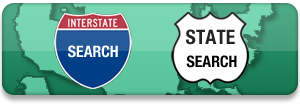
The East and West Coast crews of Pit Stops for Kids traveled throughout the U.S., Western Canada, Mexico, and the Caribbean in 2012, bringing pit stops, resort lodging picks, attractions, outdoor activities, and travel tips to a record number of readers. We’re so glad you were along for the ride! The collage above only represents a small percentage of the best travel locations we visited in 2012, but we want to take a moment to highlight some of the destinations that most stood out.
Favorite family-friendly resorts of 2012:
1. Northstar California, both in winter and in summer
2. Velas Vallarta, Puerto Vallarta, Mexico
3. Tigh-Na-Mara Resort, Parksville, BC Canada
4. Brasada Ranch, Bend OR
5. Willoughvale Inn and Cottages, Lake Willoughby, VT
Favorite family-friendly activities of 2012:
1. Whale watching with Remote Passages, Tofino BC
2. Gravity-based mountain biking, Lake Tahoe, CA
3. Kayaking with Wanderlust Tours, Bend OR
4. Biking with Spokes, Vancouver, BC
5. Backcountry skiing with Cascade Huts, Mt. Hood OR
Favorite camping and national park experiences of 2012:
1. Pacific Rim National Park Reserve, Vancouver Island Canada
2. Acadia National Park, Bar Harbor, Maine
3. Silver Falls State Park, Salem OR
4. Moran State Park, Orcas Island WA
5. Channel Islands National Park, Ventura CA
Favorite Disney Experiences of 2012:
1. Launch of the Disney Fantasy, Cape Canaveral, FL
2. Castaway Cay, Bahamas
3. Opening of Cars Land, California Adventure, CA
4. Educational Animal Kingdom attractions, Disney World, FL
5. The new Buena Vista Street, California Adventure, CA
Favorite museums and tours of 2012:
1. California Academy of Sciences, San Francisco, CA
2. Sertoma Butterfly House, Sioux Falls, SD
3. Jelly Belly Factory Tour, Fairfield, CA
4. Montshire Museum of Science, Norwich, VT
5. Museum of Anthropology, Vancouver, BC








 Spring break family travel is just around the corner, but unfortunately, cold and flu season is not yet over! If you’re planning a family vacation, will your health insurance cover you on the road? Should you add holiday health insurance to your vacation budget? What other steps are necessary to ensure emergency medical treatment for your family?
Spring break family travel is just around the corner, but unfortunately, cold and flu season is not yet over! If you’re planning a family vacation, will your health insurance cover you on the road? Should you add holiday health insurance to your vacation budget? What other steps are necessary to ensure emergency medical treatment for your family?




 1. Bring a backpack baby or toddler carrier. We loved our sturdy REI backpack carrier, but that was, ahem, over a decade ago. If you’re looking for more updated equipment, I recommend
1. Bring a backpack baby or toddler carrier. We loved our sturdy REI backpack carrier, but that was, ahem, over a decade ago. If you’re looking for more updated equipment, I recommend  Unless you’re a hardcore snow camper setting out on snowshoes or skis (next month, my family and I will be that brave!), you’ll need think outside the box to get full enjoyment out of your winter camping experience. The following tips will ensure happy campers while enjoying campgrounds and recreational sites during the winter months:
Unless you’re a hardcore snow camper setting out on snowshoes or skis (next month, my family and I will be that brave!), you’ll need think outside the box to get full enjoyment out of your winter camping experience. The following tips will ensure happy campers while enjoying campgrounds and recreational sites during the winter months: Here in Oregon, the following are some of our favorite one tank wonders. If you live here too, I hope you’ll check them out!
Here in Oregon, the following are some of our favorite one tank wonders. If you live here too, I hope you’ll check them out!  Of course, even once you have roadside assistance, it’s good to take practical measures to be prepared while on the road with kids. To that end, we always toss a few blankets and a small case of water bottles in the back of our vehicle (they come in handy during picnics and roadside stops), carry a spare tire and jump kit at all times, and bring car chargers for our cell phones. And ever since that day we ran out of gas, we take signs like this one (near California’s Death Valley) seriously:
Of course, even once you have roadside assistance, it’s good to take practical measures to be prepared while on the road with kids. To that end, we always toss a few blankets and a small case of water bottles in the back of our vehicle (they come in handy during picnics and roadside stops), carry a spare tire and jump kit at all times, and bring car chargers for our cell phones. And ever since that day we ran out of gas, we take signs like this one (near California’s Death Valley) seriously: